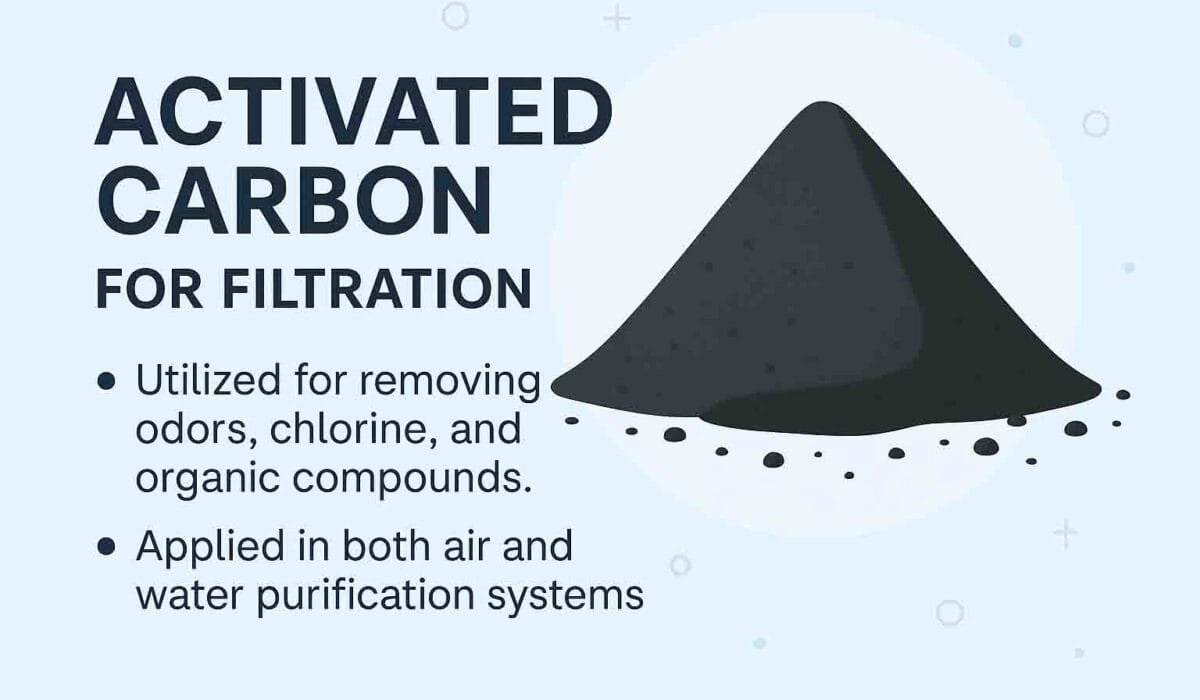Activated Carbon for Filtration: How to Choose the Right Grade for Maximum Efficiency
Activated carbon is one of the most versatile and effective filter media used across residential, commercial, and industrial water treatment systems. Known for its high adsorption capacity, activated carbon removes chlorine, odor, organic compounds, and other impurities from water.
But how do you choose the right activated carbon for filtration? Whether you’re a water treatment plant operator or a distributor, understanding key quality parameters is critical to system performance and long-term success.
Let’s dive into everything you need to know.
What Is Activated Carbon and How Does It Work?
Activated carbon is a processed form of carbon with a highly porous surface and large surface area, designed to adsorb impurities. It traps contaminants through adsorption, where molecules stick to the surface of the carbon.
Starke offers coconut shell-based granular activated carbon (GAC) specifically engineered for water filtration applications.
Key Quality Parameters to Look for
1. Granule Size & Uniformity
Choose carbon with consistent particle size for steady flow rates and minimal pressure drop.
Avoid mixed sizes, which may cause channeling or clogging.
2. Ash Content
Low ash content (<5%) improves adsorption and prevents filter fouling.
High ash indicates lower purity and reduced lifespan.
3. Surface Area (Porosity)
Higher surface area = better adsorption.
Quality carbon has 900–1200 m²/g surface area.
4. Iodine Value
Standard measure of adsorption capacity.
Ideal iodine value for water treatment: 1000 mg/g and above.
5. Bulk Density
Affects filter design and media handling.
Ideal range for coconut shell GAC: 0.45–0.55 g/cc.
6. Certifications
Ensure it meets AWWA, or ISO standards.
Starke carbon is tested and certified for potable water use.
Applications of Activated Carbon in Water Treatment
Activated carbon is indispensable in:
| Application | Function |
|---|---|
| Drinking Water Filters | Removes chlorine, taste, and odor |
| Industrial Water Treatment | Eliminates VOCs, phenols, organics |
| Wastewater Reuse | Reduces color and contaminants |
| Food & Beverage | Improves taste and clarity |
| Aquaculture & Aquariums | Maintains safe aquatic environments |
Types of Activated Carbon – Which One Should You Choose?
| Type | Features | Best Use |
|---|---|---|
| Granular Activated Carbon (GAC) | High flow, reusable, strong | Water filtration systems, RO pre-treatment |
| Powdered Activated Carbon (PAC) | Fine, high surface area | Emergency dosing, batch treatments |
| Extruded Activated Carbon (EAC) | Compressed, high strength | Industrial gas phase, air filtration |
Pro Tip: GAC is the most preferred option for continuous water filtration systems.
Advantages of Using Activated Carbon for Filtration
High adsorption capacity
Removes chlorine, odor, pesticides, VOCs
Natural, coconut shell-based, eco-friendly
Can be reactivated in some cases
Safe for drinking water treatment
How to Choose the Right Activated Carbon Supplier in India
India is one of the world’s largest producers of activated carbon. To ensure quality, choose suppliers like Starke Filter Media with:
Proven export track record
Batch-wise test reports
Custom sizes and packaging
Fast logistics support
NSF, ISO, AWWA compliance
FAQs: Activated Carbon for Filtration
How often should activated carbon be replaced?
Every 6–12 months, depending on flow rate and contaminant load.
Can I reuse activated carbon?
In industrial setups, it may be reactivated thermally, but domestic carbon should be replaced.
What is iodine value and why is it important?
Iodine value indicates adsorption capacity. A value of 1000 mg/g or higher is ideal for water filtration.
What’s the difference between GAC and PAC?
GAC is coarse and ideal for flow systems. PAC is fine and used in batch or chemical treatments.
Best Practices for Activated Carbon Filter Performance
Use a sediment pre-filter to block suspended solids.
Maintain optimal flow rate to maximize contact time.
Backwash GAC filters periodically to prevent clogging.
Replace carbon as per schedule to avoid saturation.
Test output water regularly for quality assurance.
Conclusion: Make an Informed Choice with Starke Activated Carbon
Choosing the right activated carbon for filtration is key to achieving safe, clear, and odor-free water. By understanding physical properties, application-specific grades, and supplier credibility, you can make a confident and results-driven decision.
At Starke, we offer high-quality, coconut-based activated carbon tailored for a variety of water treatment needs.
Need Help Choosing the Right Activated Carbon?
Email: info@starkefiltermedia.com
Call: +91 9667082698
Website: www.starkefiltermedia.com

